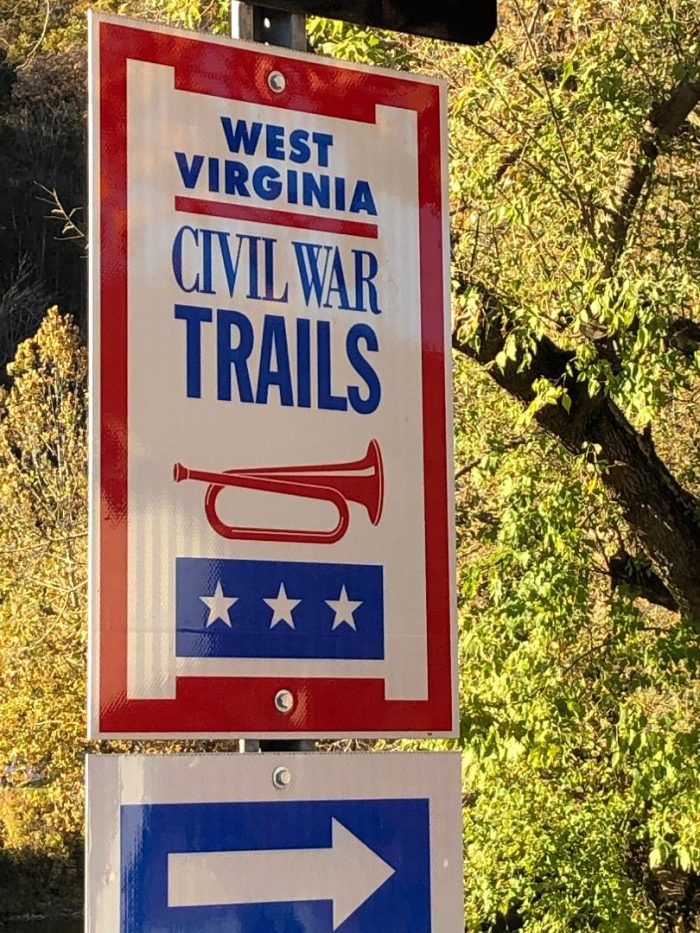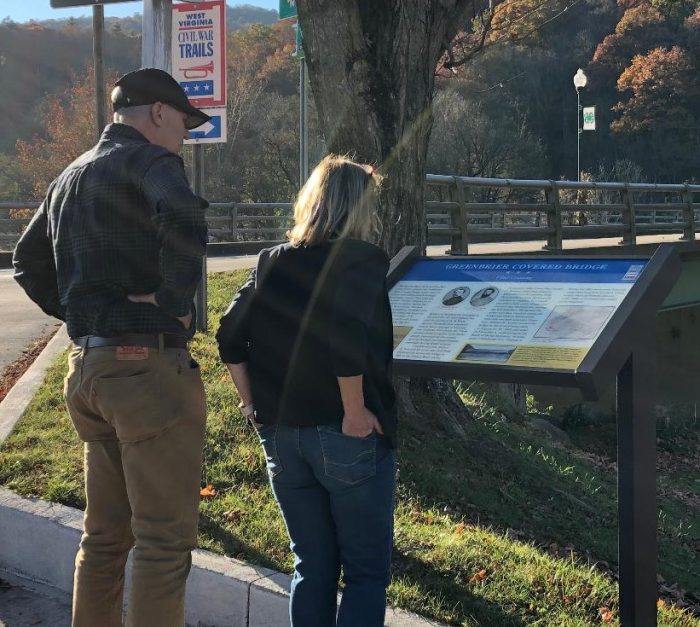A Civil War Trail Road Trip through Nature’s Mountain Playground
Michael Moore
I’m certainly no expert on the history of humanity, but I feel safe in the assumption that the immorality of slavery probably dates to the beginnings of mankind. From that first moment in history when one human being felt they were superior to another human being, slavery has, unfortunately, been with us. Over the span of time the oppression of one person by another has had an array of supporters and detractors. Slavery has been misguidedly rationalized and severely contested; it has run the full spectrum of societal debate and continues to do so today. In this country, that debate reached a national tipping point when a 51-year-old lawyer and statesman named Abraham Lincoln won the 1860 U.S. presidential election. For decades prior to Lincoln’s victory, the issue of slavery had been a political controversy in the formative years of the United States of America. By the time of the presidential election, the debate over slavery revolved around the dispute as to whether slavery should be allowed to spread into the western territories, thus creating more slave states, or inhibited from growing any further. The latter notion, in the minds of many, was seen as the beginning of the end to slavery in the United States. Because Lincoln favored a halt in the spread of slavery into the west, seven southern slave states seceded from the United States in 1861 to form the Confederacy, thus lighting the fuse of the American Civil War.
Now, if you know just a little bit of West Virginia history, then you’ll know the founding of our state has a direct connection to the Civil War. We pretty much became a state right in the middle of the war – June 20, 1863. Today, almost 160 years after the war’s end, the American Civil War is still the topic of books, movies, and countless reenactments all over the country. And right here in Pocahontas County, we have lots of Civil War history to share. Although the conflict marks a decidedly dark period in our nation’s history, for many Americans taking the time to remember the battles, the tragic loss of life (on both sides), and visiting the historic sites, is a way of honoring those that came before us and educating future generations in the hope of not repeating mistakes of the past. Now, with that goal in mind, to both honor and educate, we’d like to suggest a Civil War driving tour through Pocahontas County. So, if a road trip through our beautiful county to learn a little Civil War history and take in some rugged, mountain scenery at the same time, sounds like an awesome day trip or a great, weekend getaway to you, here’s a few Civil War destinations to check out in Nature’s Mountain Playground.
Civil War Trails

The Civil War Trails organization has its beginnings among a group of historians whose combined work helped link together the sites of Robert E. Lee’s retreat from Petersburg to his surrender at Appomattox. Since 1994 Civil War Trails has been working with towns within a collective that now reaches into six states and guides travelers to over 1,200 Civil War sites. And you guessed it, West Virginia just happens to be one of those six states. Thanks to the efforts of the Civil War Trail organization, there are multiple opportunities right here in Pocahontas County to visit battlefields, a war trail, or other historic landmarks of the Civil War. The organization has placed Civil War Trail markers in Hillsboro, Huntersville, Minnihaha Springs, Camp Allegheny, Bartow, and Marlinton. These markers are a great way to get a quick overview of what took place at each of those locations during the war. Without them, many travelers would pass right by having no idea of the history that unfolded there. Load up the family for the day and use these markers to create your own “Civil War discovery trail”. It’s a great way to see Pocahontas County while learning a little Civil War history. To learn more about the Civil War Trail in West Virginia or the efforts of the organization in other states and to view their Civil War Trails map, visit their website by clicking here.
Droop Mountain Battlefield State Park
Droop Mountain Battlefield, located 16 miles south of Marlinton, on Route 219, is the site of West Virginia’s last major battle of the Civil War. On November 6, 1863, Union forces under the command of Brigadier General William W. Averell defeated Confederate forces commanded by Brigadier General John Echols and Colonel William L. “Mudwall” Jackson. Confederate forces were driven from their temporary earthen fortifications (called breastworks) situated on the mountain and escaped to the south through Lewisburg. As a result of the battle, reports estimate the total loss of life right around 415 men.
Dedicated in 1928, Droop Mountain Battlefield is West Virginia’s oldest state park and is preserved and administered by the state of West Virginia. Today, the park offers visitors eight Civil War hiking trails, picnic shelters, a lookout tower, museum, and markers throughout the grounds honoring the fallen. For more information on the park and a downloadable map click here.
Quilt Trail of Pocahontas County
Now here’s a suggestion you may not have been expecting. When most people think about a Civil War trail in West Virginia, I’ll wager quilts aren’t the first thing that comes to mind. But if you’ll bear with me, I think you Civil War buffs will find this interesting. As a part of the 2013 celebration of West Virginia’s 150th birthday (officially known as a sesquicentennial), nineteen quilt patterns were selected to be reproduced and displayed throughout Pocahontas County. Most of these quilt blocks measure eight feet square and adorn many of the barns found throughout the county. Their patterns date back to the 19th century and have a distinct Civil War significance. Hidden within the intricate patterns of several of these quilt blocks are messages to aid escaping slaves, give voice to women’s opinions on politics of the day, and even break the curse of a wandering husband. The visitor centers of Nature’s Mountain Playground will be happy to supply you with a map giving directions to each of the quilt blocks along the trail and a brief explanation of the patterns. The Pocahontas County quilt trail is an enjoyable, scavenger hunt of history that adds a whole new layer of appreciation and understanding of what many people endured during the American Civil War. It’s a great way to get out and see the county and learn a little history along the way.
Remembering Our Past

It has recently been estimated that anywhere from 650,000 to 850,000 lives were lost during the American Civil War, making it the deadliest of all American wars. The work of those of the Civil War Trails organization and others that share their interests is not meant to glorify the horrors of war but, instead, to honor those that have fallen. The markers, state parks, and trails that focus on the American Civil War all serve to remind us of the human element of war and the terrible price war exacts and we do a real disservice to those who came before us when we try to forget our past. It has been said, “Those who cannot remember the past are condemned to repeat it.” Sound words for all of us to reflect on as we create our own Civil War heritage trail through Nature’s Mountain Playground.
